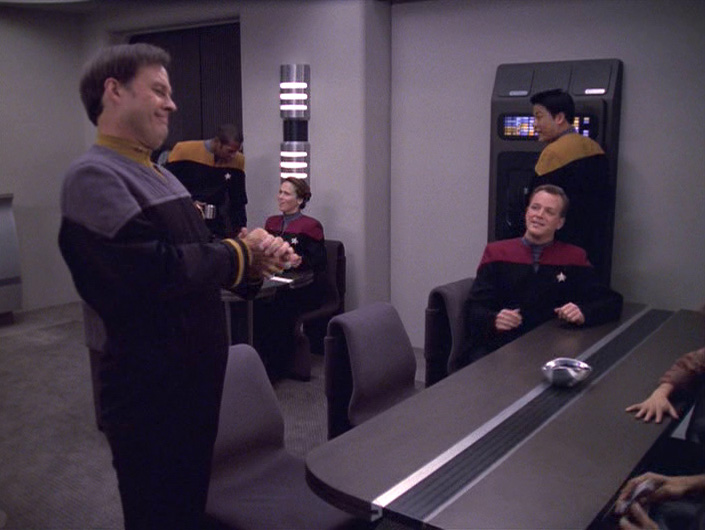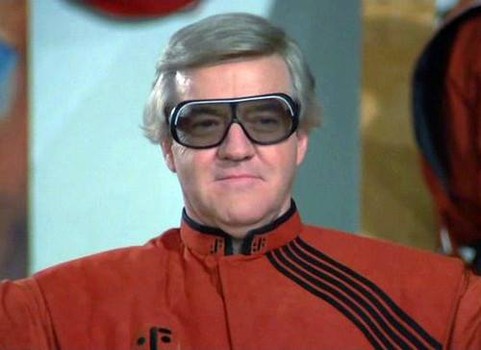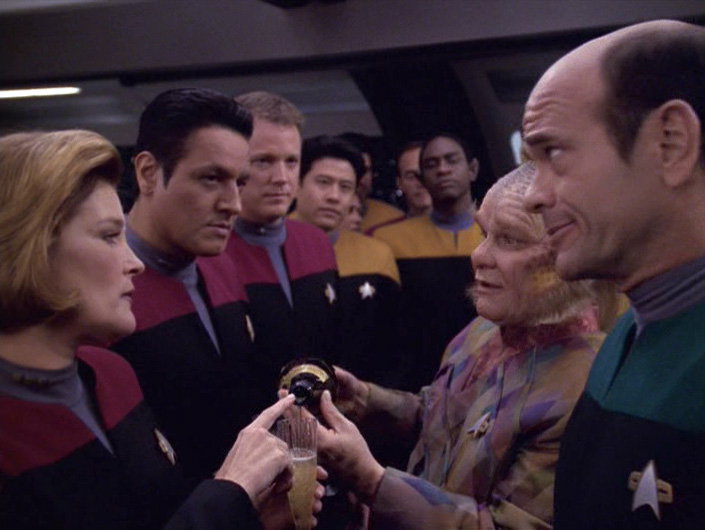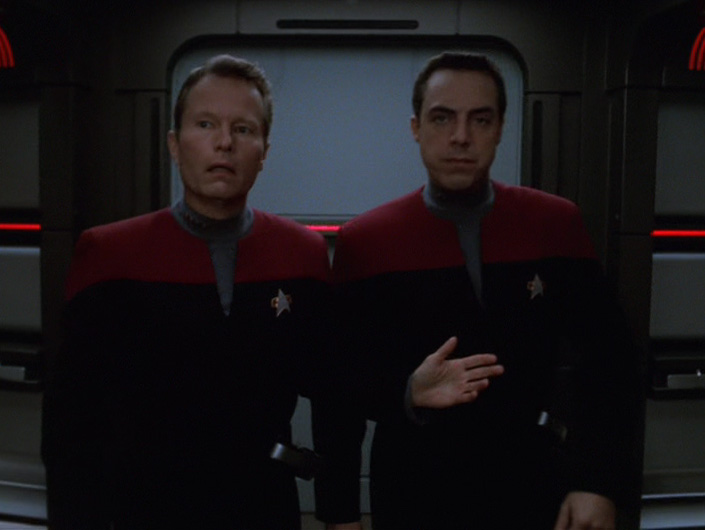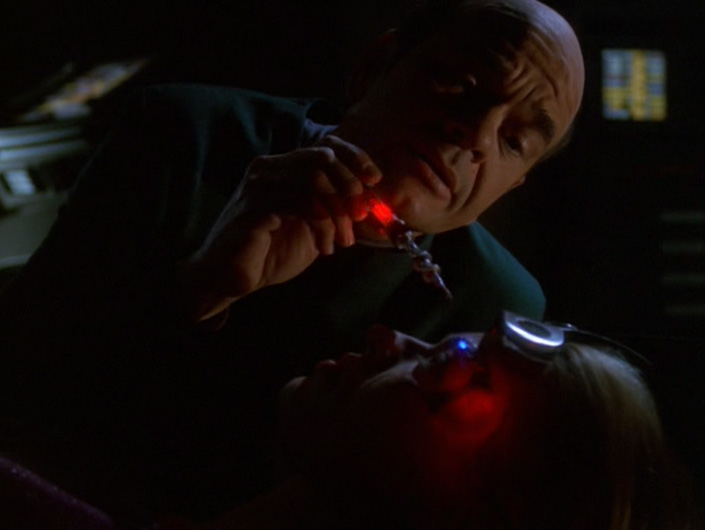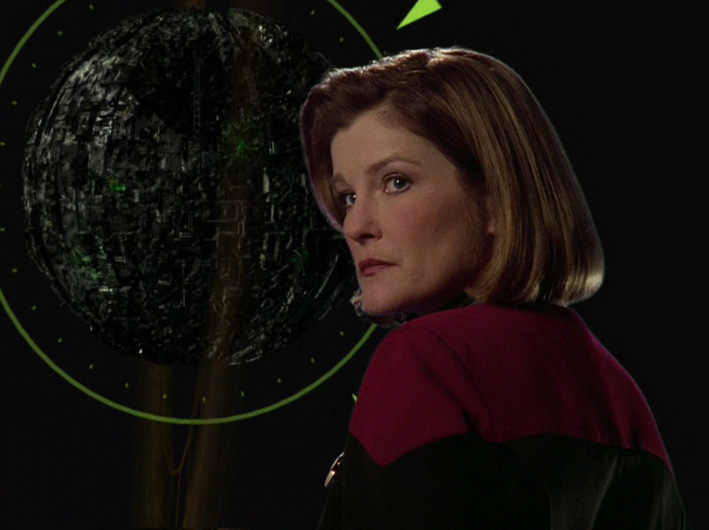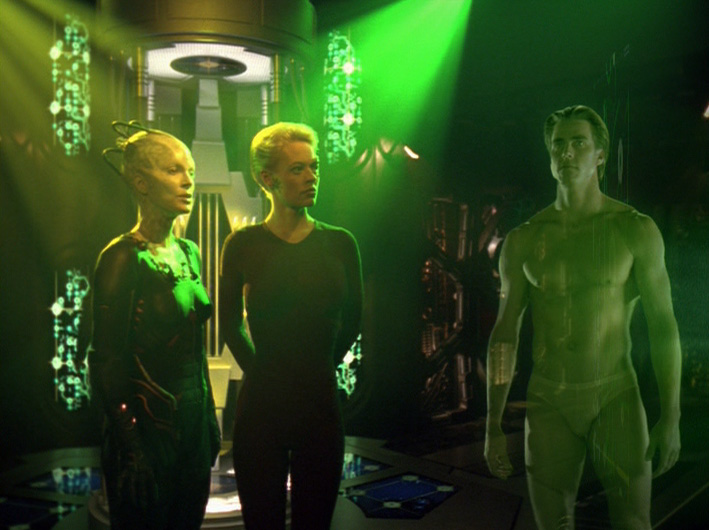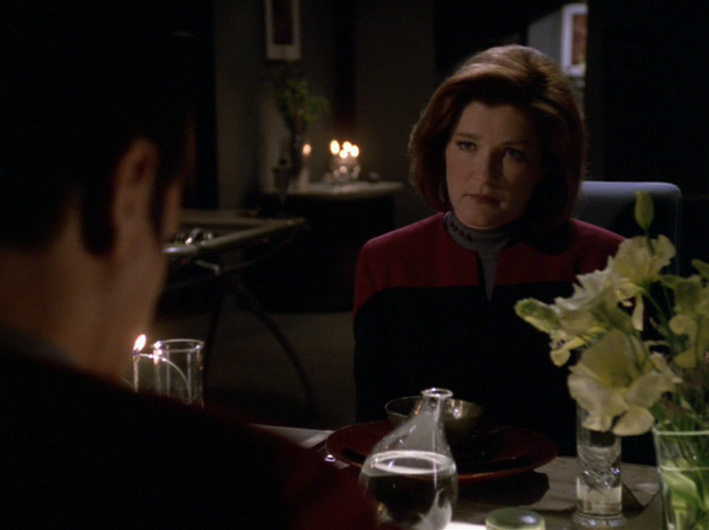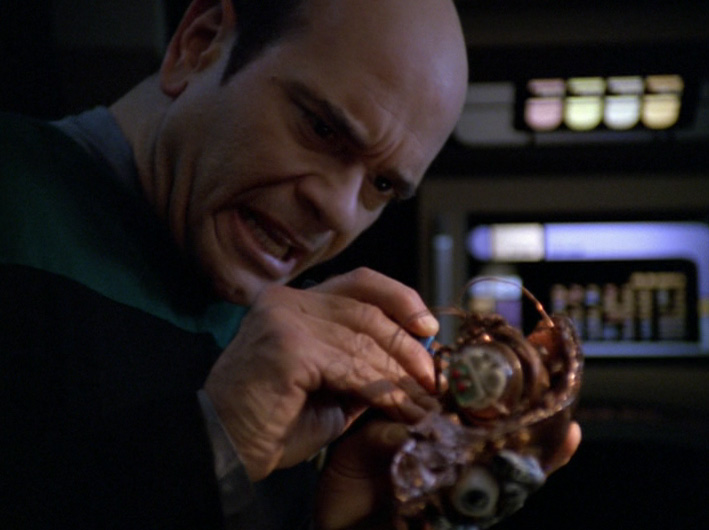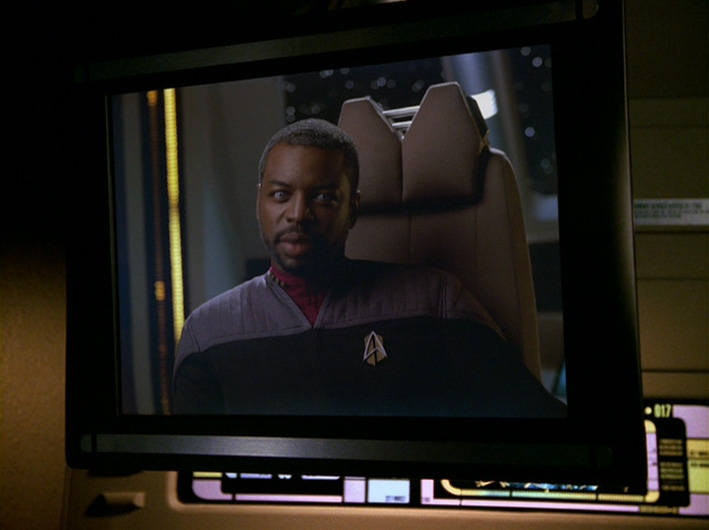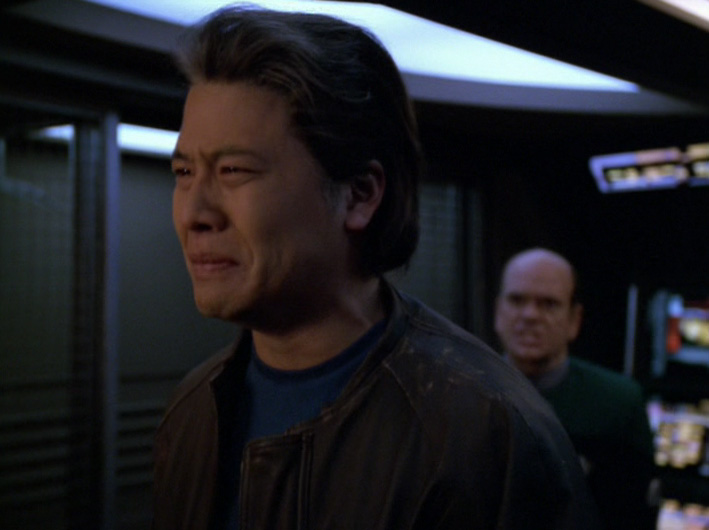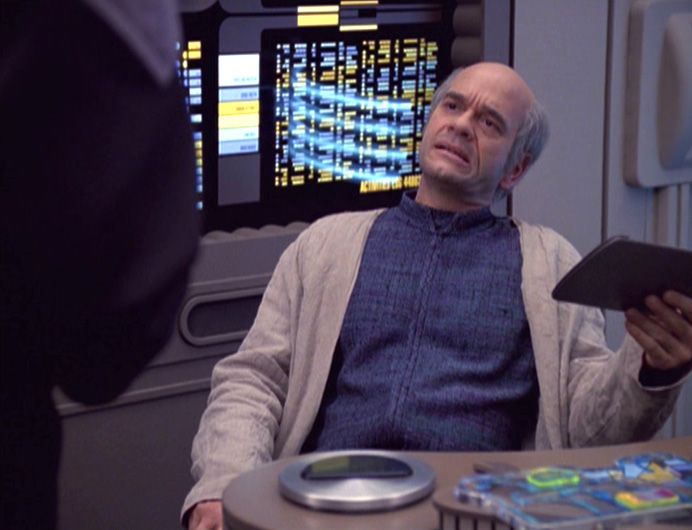
Starfleet, working through the Pathfinder project, establishes regular contact with Voyager every 32 days. The Doctor gets a letter from Barclay telling him his creator, Doctor Lewis Zimmerman (also played by Robert Picardo) is dying of some weird illness. The Doctor convinces Janeway to send him to the Alpha Quadrant to use some of his mad Delta Quadrant skillz to treat Zimmerman. Upon arrival, Zimmerman is an old crank and the Doctor can’t get through to him. Barclay calls on Deanna Troi — was Marina Sirtis really hard up for a paycheck in 2000? — who stops by to help, yet again. After that doesn’t work, the Doctor’s matrix starts failing, forcing Zimmerman to fix him — and then, the Doctor saves Zimmerman. Of course, it was a ploy cooked up by Barclay and Troi, but the Doctor heads back to the Delta Quadrant having formed a sort of bond with his creator.
Why it’s important
The big picture item is that Starfleet and Voyager now have REGULAR contact. That’s a huge deal that will play out throughout the rest of the series. The Doctor/Zimmerman plot, while not bad, is really secondary as far as the tapestry is concerned. Interestingly, this episode was co-written by Picardo.
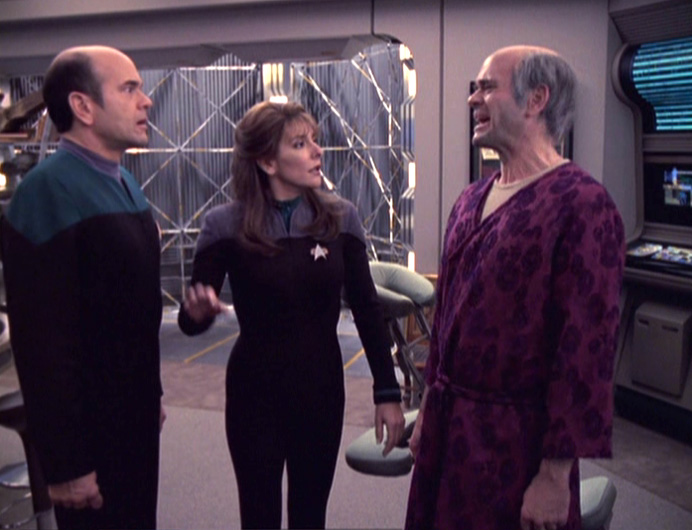
What doesn’t hold up
The biggest problem is that Voyager changed the Zimmerman character from the last and only time we actually saw him, on DS9’s “Doctor Bashir, I Presume”, in which Zimmerman travels to DS9 to consider using Bashir as a template for a new EMH and acts an awful lot like Voyager’s doctor. The thing with Bashir doesn’t pan out, but Zimmerman, in the episode, is portrayed as a crank and recluse who is very different than the guy we met on DS9 — and don’t get me going on Zimmerman saying he hasn’t left Jupiter Station (where he lives and works) in more than four years, when he traveled to DS9 about three years earlier. Why, Voyager? Why? You don’t need to be this sloppy. Why not just say “almost two years” instead of “more than four years”?
Bigger picture, this is just classic Voyager — in which the creators THOUGHT they needed to disregard continuity for good drama. Sure, you could argue that making Zimmerman a crank makes him more of a foil for the Doctor. But, really, it just comes across as sitcom fodder. A more complex relationship between the two could have been done with Zimmerman’s stated motivation (EMHs like the Doctor were considered failures) without making him seem like the neighbor in a ’70s comedy. Worse, Robert Picardo (playing double duty) almost pulls it off, but the episode just comes across as too ham-fisted. There’s a throwaway line about how Zimmerman’s condition is affecting his personality — but that’s a real stretch.
Finally, one wonders about the Voyager crew members who had to sacrifice their first letters home in years because of the Doctor’s trip to the Alpha Quadrant. And I guess it was a good thing that no medical emergencies happened in the month between transmissions. Tom Paris, M.D., to the rescue?
Oh, and this is the second of three Voyager episodes that Sirtis shows up on in about a year. It really comes across as the creators throwing her a bone/paycheck.
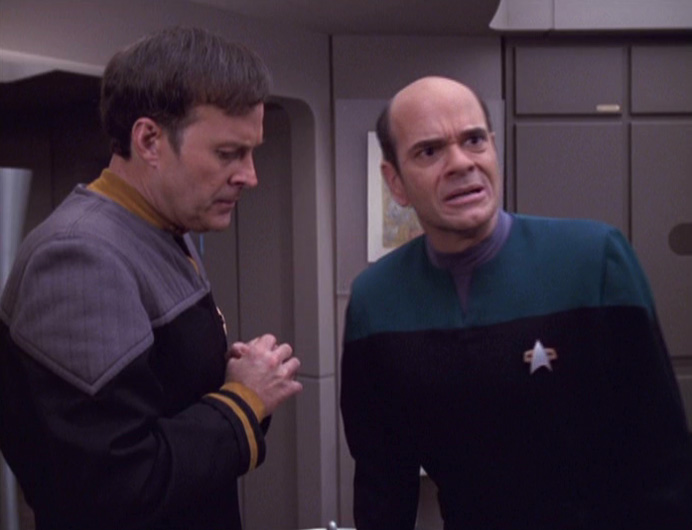
Final thoughts
I did like the scene in which Janeway and Chakotay discuss how to respond to a Starfleet query about casualties the crew has encountered, their overall journey and the Maquis. It was a necessary discussion — one that wasn’t had in “Message in a Bottle” when there really wasn’t time — and one that, of course, is never followed up on. One thing’s clear: Continuity in Voyager got worse as the series dragged on. And that’s saying something.
Coming next week …
Can the Borg dream? And, if they do — can they dream of a civil war that will have no lasting effects? Well, it’s Voyager, so you betcha.

